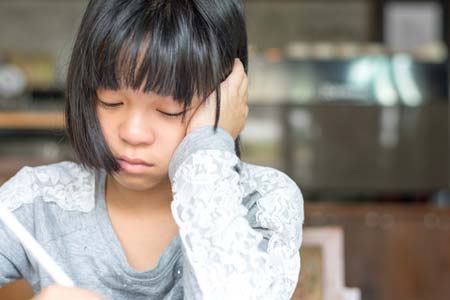Behavior Consultations & Management

Raising a child can be challenging. Even under the best circumstances, their behaviors and emotions can change frequently and rapidly. All children are sad, anxious, irritable, or aggressive at times, or they occasionally find it challenging to sit still, pay attention, or interact with others. In most cases, these are just typical developmental phases. However, such behaviors may indicate a more serious problem in some children. Valentine Pediatric Group provides behavior management consultations for a variety of childhood conditions and/or disorders.
How can you tell the difference between challenging behaviors and emotions that are a normal part of growing up and those that are cause for concern? In general, consider seeking help if your child's behavior persists for a few weeks or longer; causes distress for your child or your family; or interferes with your child's functioning at school, at home, or with friends. If your child's behavior is unsafe, or if your child talks about wanting to hurt themselves or someone else, seek help immediately.
Attention Deficit Hyperactivity Disorder
Is it hard for your child to sit still? Does your child act without thinking first? Does your child start but not finish things? If so, your child may have attention deficit hyperactivity disorder (ADHD). Nearly everyone shows some of these behaviors at times, but ADHD lasts more than 6 months and causes problems in school, at home and in social situations.
ADHD is more common in boys than girls. It affects 3 to 5% of all American children.
The main features of ADHD are
- Inattention
- Hyperactivity
- Impulsivity
No one knows exactly what causes ADHD. It sometimes runs in families, so genetics may be a factor. There may also be environmental factors.
A complete evaluation by a trained professional is the only way to know for sure if your child has ADHD. Treatment may include medicine to control symptoms, therapy, or both. Structure at home and at school is important. Parent training may also help.
Autism
Autism, also known as autism spectrum disorder, is a broad range of conditions that affect communication and behavior, usually appearing by age 2.
People with autism may have difficulty with communication and social interaction; restricted interests and repetitive behaviors; and inability to function effectively in school, work, and other areas of life. Although scientists are still trying to understand why some people develop autism and others don't, risk factors may include:
- A sibling with autism
- Older parents
- Certain genetic conditions, such as Down, fragile X, and Rett syndromes
- Very low birth weight
Depression
Children who are depressed may exhibit symptoms differently than adults. Occasionally being sad or feeling hopeless is a part of every child's life. However, some children feel sad or uninterested in things that they used to enjoy, or feel helpless or hopeless in situations they are able to change. When children feel persistent sadness and hopelessness, they may be diagnosed with depression.
Behaviors often seen in children with depression include
- Feeling sad, hopeless, or irritable a lot of the time
- Not wanting to do, or enjoy doing, fun things
- Showing changes in eating patterns - eating a lot more or a lot less than usual
- Showing changes in sleep patterns - sleeping a lot more or a lot less than normal
- Showing changes in energy - being tired and sluggish or tense and restless a lot of the time
- Having a hard time paying attention
- Feeling worthless, useless, or guilty
- Showing self-injury and self-destructive behavior
Some children may not talk about their helpless and hopeless thoughts, and may not appear sad. Depression might also cause a child to make trouble or act unmotivated, causing others not to notice that the child is depressed, or to incorrectly label the child as a trouble-maker or lazy.
Anxiety
When children do not outgrow the fears and worries that are typical in young children, or when there are so many fears and worries that they interfere with school, home, or play activities, the child may be diagnosed with an anxiety disorder.
Types of anxiety disorders include
- Being very afraid when away from parents (separation anxiety)
- Having extreme fear about a specific thing or situation, such as dogs, insects, or going to the doctor (phobias)
- Being very afraid of school and other places where there are people (social anxiety)
- Being very worried about the future and about bad things happening (general anxiety)
- Having repeated episodes of sudden, unexpected, intense fear that come with symptoms like heart pounding, having trouble breathing, or feeling dizzy, shaky, or sweaty (panic disorder)
Anxiety may present as fear or worry, but can also make children irritable and angry. Anxiety symptoms can also include trouble sleeping, as well as physical symptoms like fatigue, headaches, or stomachaches. Some anxious children keep their worries to themselves and, thus, the symptoms can be missed.

